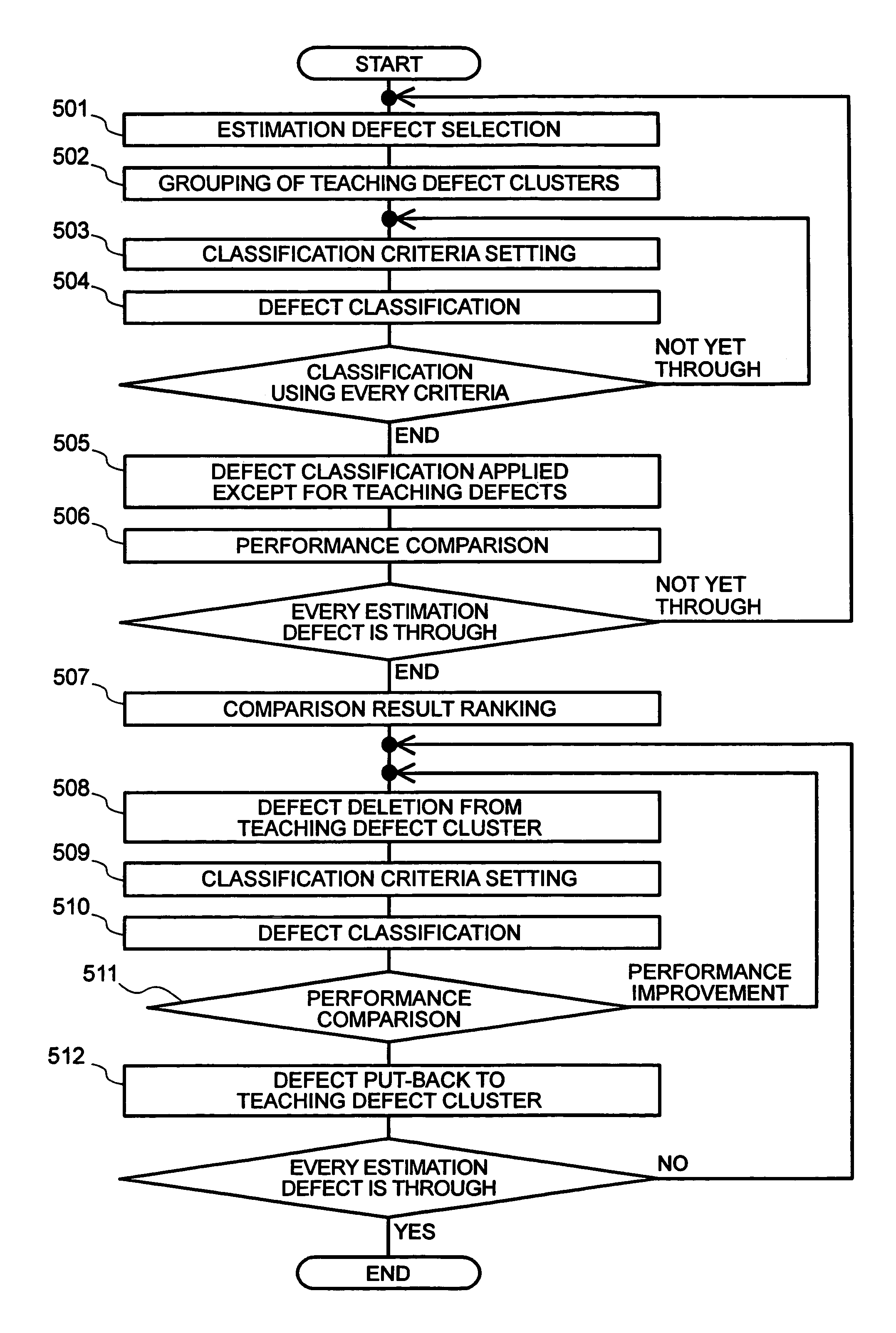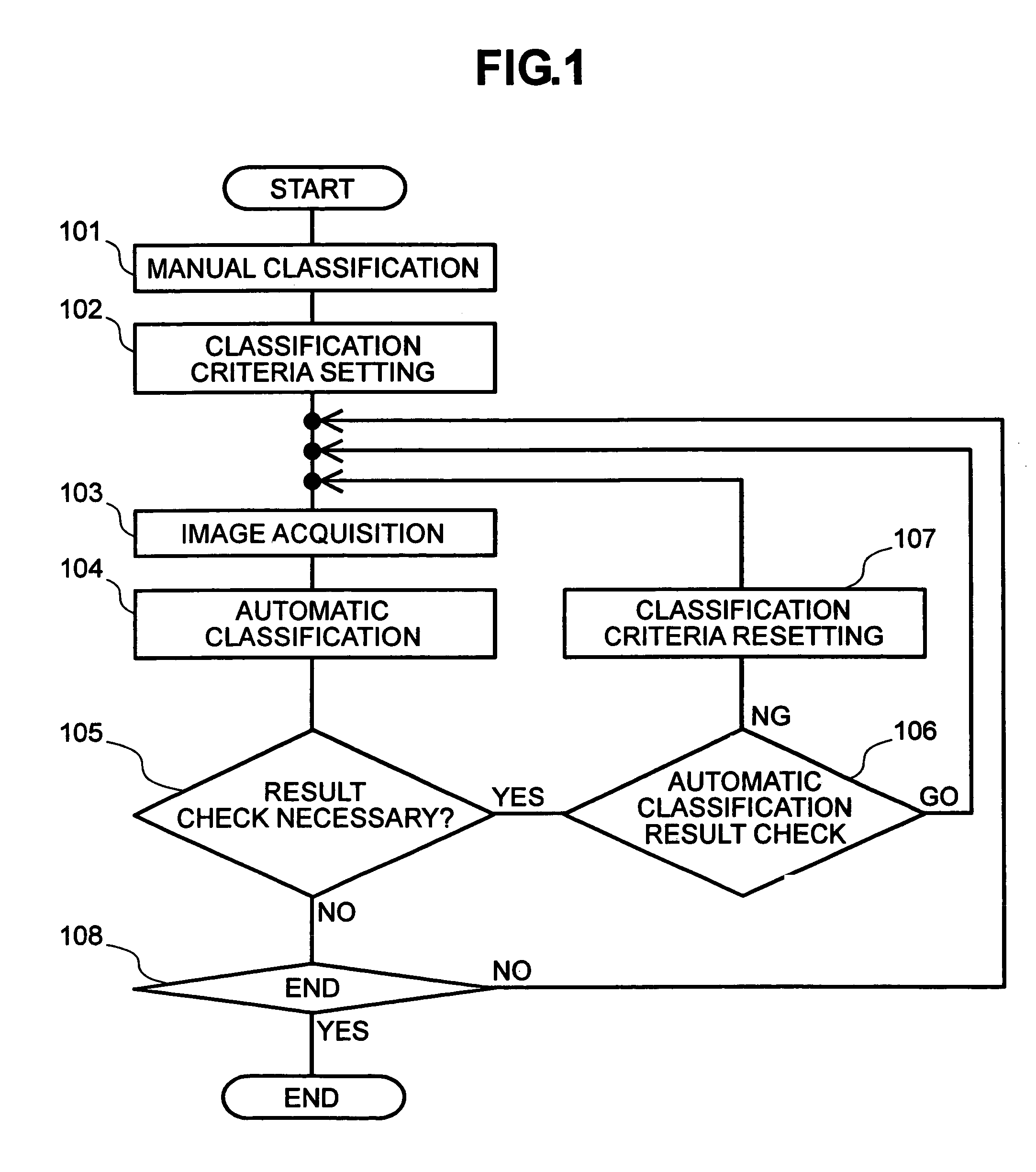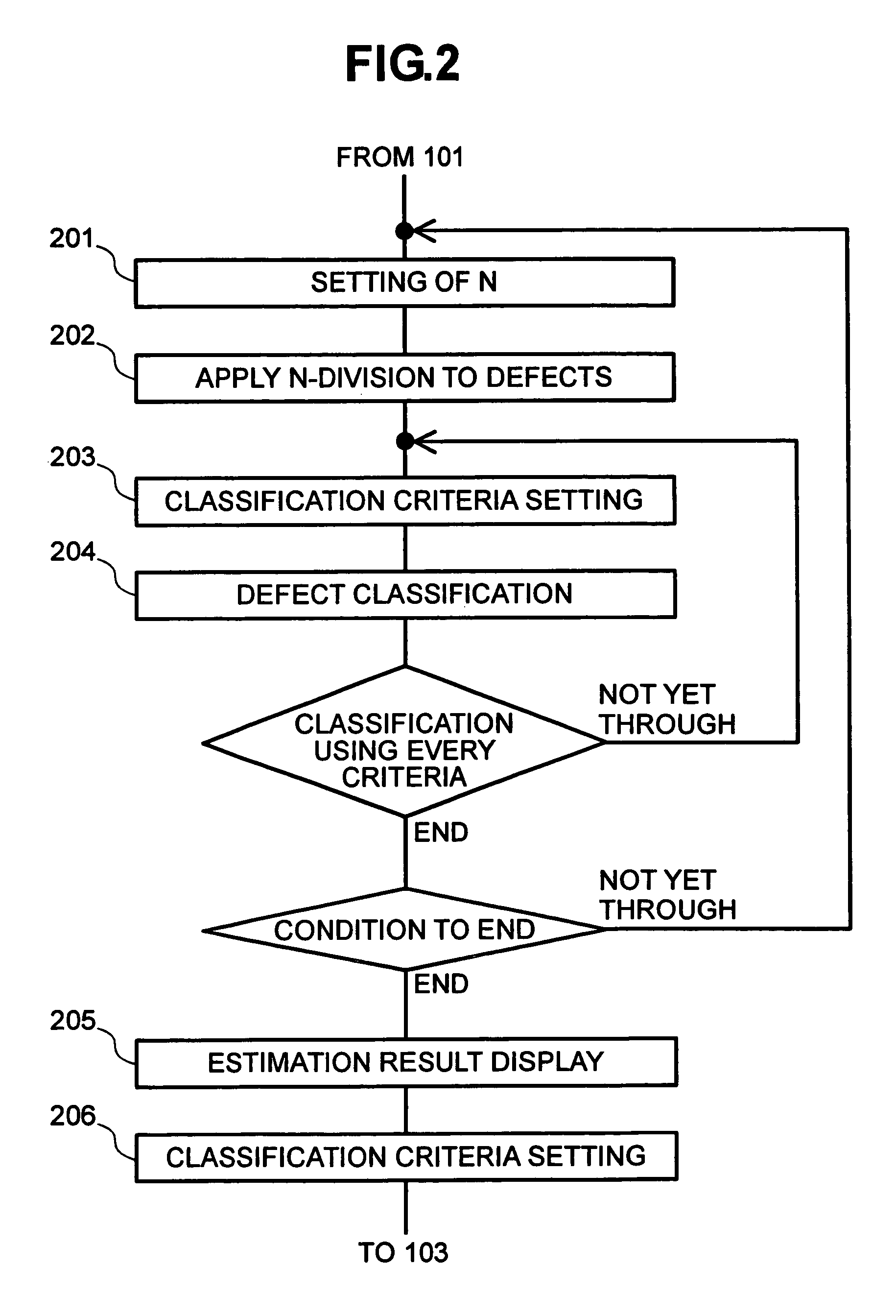Defect classification using a logical equation for high stage classification
a logical equation and high-stage classification technology, applied in the field of defect classification methods, can solve the problems of difficult to achieve a high yield for semiconductor manufacturing, automatic classification cannot be appropriately done, and the post-processing manufacturing process of semiconductors is more complicated than ever, so as to achieve better classification performance and better classification performance
- Summary
- Abstract
- Description
- Claims
- Application Information
AI Technical Summary
Benefits of technology
Problems solved by technology
Method used
Image
Examples
Embodiment Construction
[0021]In the below, an embodiment of the present invention is described by referring to FIGS. 1 to 8.
[0022]As to a semiconductor wafer, the pattern of which is formed to be of multilayer structure by going through a plurality of steps. In the process for manufacturing such a multilayer structure, for monitoring the manufacturing process, every layer is subjected to outer appearance inspection, and if any defect is detected thereby, the defect is reviewed and then classified according to defect type. For defect reviewing, various manners have been proposed and put into practical use as follows:
[0023]1. the manner of reviewing images picked up by an inspection device during inspection,
[0024]2. the revisit manner of picking up any defect images again using an outer appearance image pickup unit of the inspection device,
[0025]3. the manner of performing a review using a review device such as a review Scanning Electronic Microscope (SEM) of a type different from the inspection device.
[002...
PUM
 Login to View More
Login to View More Abstract
Description
Claims
Application Information
 Login to View More
Login to View More - R&D
- Intellectual Property
- Life Sciences
- Materials
- Tech Scout
- Unparalleled Data Quality
- Higher Quality Content
- 60% Fewer Hallucinations
Browse by: Latest US Patents, China's latest patents, Technical Efficacy Thesaurus, Application Domain, Technology Topic, Popular Technical Reports.
© 2025 PatSnap. All rights reserved.Legal|Privacy policy|Modern Slavery Act Transparency Statement|Sitemap|About US| Contact US: help@patsnap.com



